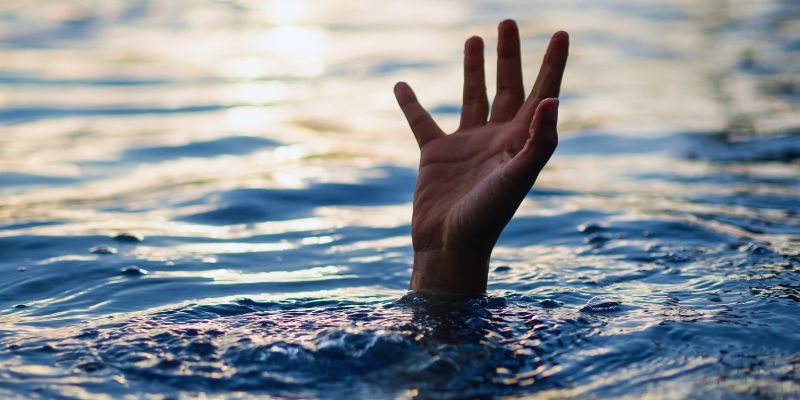Understanding Dry Drowning: Key Symptoms You Need to Watch For
An uncommon but dangerous disorder called dry drowning can follow water contact. Many times, parents believe drowning solely happens in water. However, dry drowning occurs even after one leaves the water. It happens when water aggravates the airways, causing swelling and dyspnea. Children's narrower airways and weaker immune systems lead to this disorder, mostly afflicting them. Symptoms could show hours after swimming or breathing water.
Knowing these indicators is crucial for a fast reaction. Early recognition of dry drowning helps avoid consequences. This article discusses the symptoms, causes, and preventative strategies of dry drowning. Parents' effective protection of their children depends on being informed. Let's delve further into the knowledge of dry drowning and the symptoms that require immediate action.

What is Dry Drowning?
Rare yet dangerous, dry drowning occurs when water enters the airways without filling the lungs. Breathing becomes difficult as the water causes the vocal cords to shut and spasm. If not quickly addressed, this reaction can cause a life-threatening scenario. Unlike classic drowning, dry drowning symptoms sometimes start to show after the victim has left the lake. This disorder can strike following swimming, breathing water, or even in a little incident like drinking water incorrectly.
Children are more vulnerable because of their smaller airways and poorer respiratory systems; adults can still be impacted. The symptoms might be trouble breathing, constant coughing, chest pain, extreme tiredness, or behavioral abnormalities. Parents should regularly watch their children following water activities since these symptoms might show minutes to hours after exposure. Seeking appropriate medical treatment and avoiding major problems depend on early recognition of dry drowning.
Common Symptoms of Dry Drowning
Knowing the symptoms of dry drowning enables parents to react fast. These symptoms could show minutes or hours following water contact.
- Trouble Breathing: The most often occurring complaint is trouble breathing. It results from edema or spasms in the airways. Young children might seem to be straining to catch their breath or gasping.
- Chest Pain: Treat it seriously if a youngster reports tightness or chest discomfort. It could indicate airway edema and lower oxygen levels.
- Fatigue or Lethargy: Another indication is unusual weariness or sleepiness. After water activities, a toddler could seem quite sleepy. The body's struggle to get enough oxygen could cause this.
- Vomiting: As the body responds to the discomfort breathed water brings, vomiting could result. Moreover, vomiting raises the possibility of choking.
- Behavioral Changes: Look for odd actions such as perplexity, impatience, or forgetfulness. These symptoms suggest less oxygen reaching the brain.
- Persistent Coughing: After swimming, a child may have residual coughing, which could indicate airway irritability. Never ignore persistent coughing, particularly if water contact occurred recently.

Causes of Dry Drowning
When water is inhaled into the airways and causes the vocal cord to spasm, dry drowning results; this response blocks the airways, making breathing harder. Unlike usual drowning, this disorder does not involve water filling the lungs. Rather, even a tiny amount of water can irritate one and result in dyspnea. Dry drowning can arise from several situations. These include unintentional inhalation when swimming, diving, or water recreation. It can also arise following water choking during drinking or splashing.
Little airways and less developed breathing systems make children more susceptible to dry drowning. Further raising the risk are pre-existing disorders like asthma or respiratory infections. Though rare, untreated dry drowning can be fatal. The danger can be lowered by identifying these factors and implementing safety measures, including monitoring water activities and instruction on swimming techniques.
Risk Factors of Dry Drowning
Several elements can raise the risk of dry drowning. Knowing these hazards enables parents to act in front of problems:
- Young Age: Children under five have narrower airways, increasing their likelihood of dry drowning. Their bodies find it less suited to manage respiratory system water irritation.
- Inexperience in Water: Novices in swimming run more danger of breathing in water. Swimming-related panic might cause inadvertent water swallowing or breathing.
- Lack of Supervision: Children might participate in dangerous water sports without appropriate supervision, which can raise their chances of unintentional water inhalation.
- Choking on Water: Water entering the airways can result from eating water incorrectly, getting splashed, or choking during play.
- Pre-existing Respiratory Conditions: Asthma, allergies, and respiratory infections, among other conditions, make the airways more susceptible. These conditions raise the possibility of strong responses to water irritability.
- High-Intensity Water Activities: Diving, jumping into water, or rough play raises your risk of breathing water.
- Exposure to Contaminated Water: Water contaminated with chemicals, bacteria, or irritants can aggravate airways.
Preventing Dry Drowning
Keeping your child safe comes mostly from prevention. Use these guidelines to lower your dry drowning risk.
- Supervise Water Activities: While kids swim or play close to water, always watch them closely. Make sure they are within arm's reach, particularly considering their youth. Constant observation helps avoid mishaps and lets one act immediately if something goes wrong.
- Teach Swimming Skills: Put your child in swimming classes to boost their confidence and ability. It helps to calm water-based panic. Confident swimmers are less likely to inhale water in trying circumstances.
- Use Life Jackets: Ensure your child swims in open water with a correctly fitting life jacket. They lessen water inhalation risk and give even more protection by keeping your child's head above water.
- Limit Risky Behaviors: Steer clear of rough play or jumping into shallow water that might inadvertently cause inhalation. Establishing well-defined limits lowers the possibility of water-related events.
- Watch for Symptoms After Swimming: Watch how your youngster acts following water activities. Early symptom identification can greatly influence things. Fast response guarantees prompt medical treatment, therefore avoiding complications.
Conclusion:
Rare yet dangerous, dry drowning can strike adults and children following water contact. Prevention depends on knowing the symptoms, the causes, and the risk factors. Parents should stay alert during and after water activities, closely monitor their children, and prioritize swimming instruction and safety precautions. Early identification of signs such as breathing or persistent coughing can save lives. Parents can shield their children from the risks of dry drowning by remaining knowledgeable and quick action-oriented.












